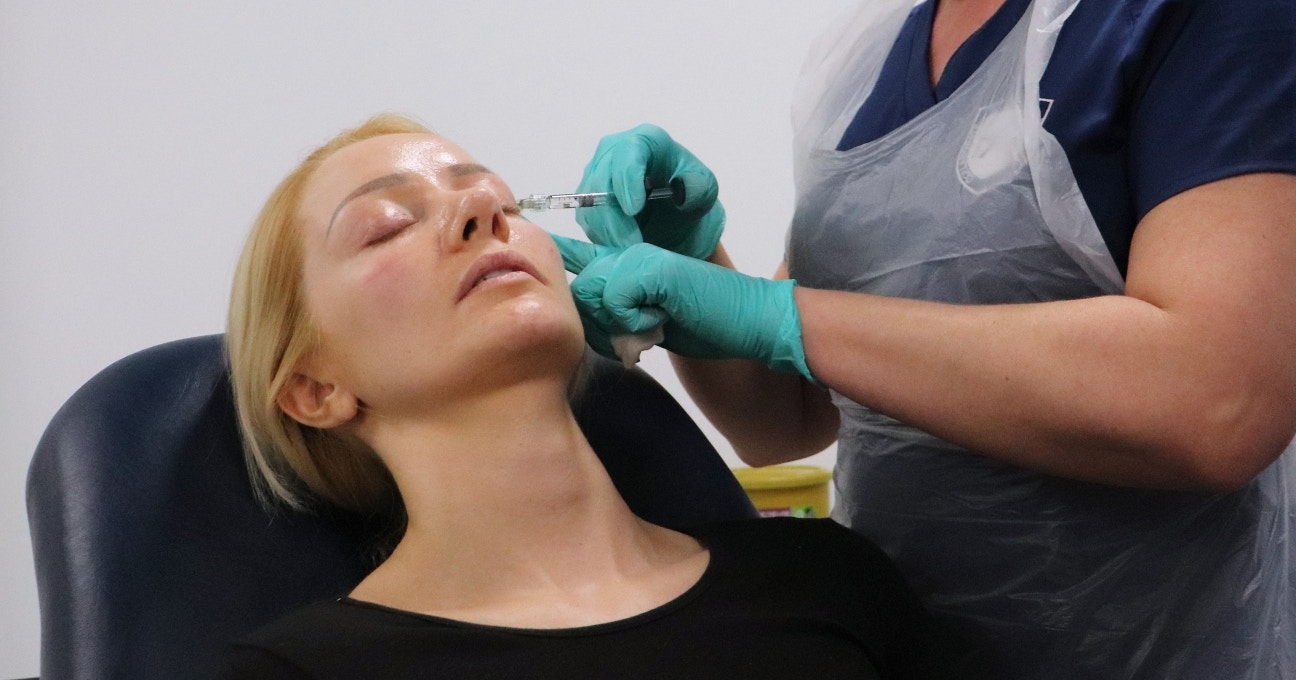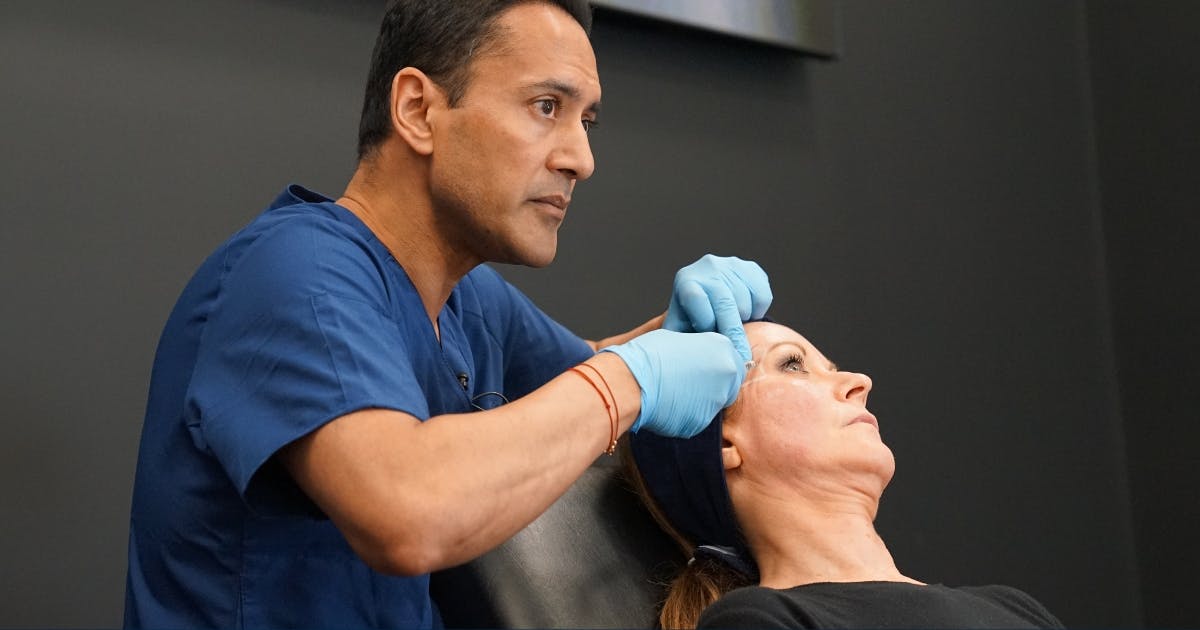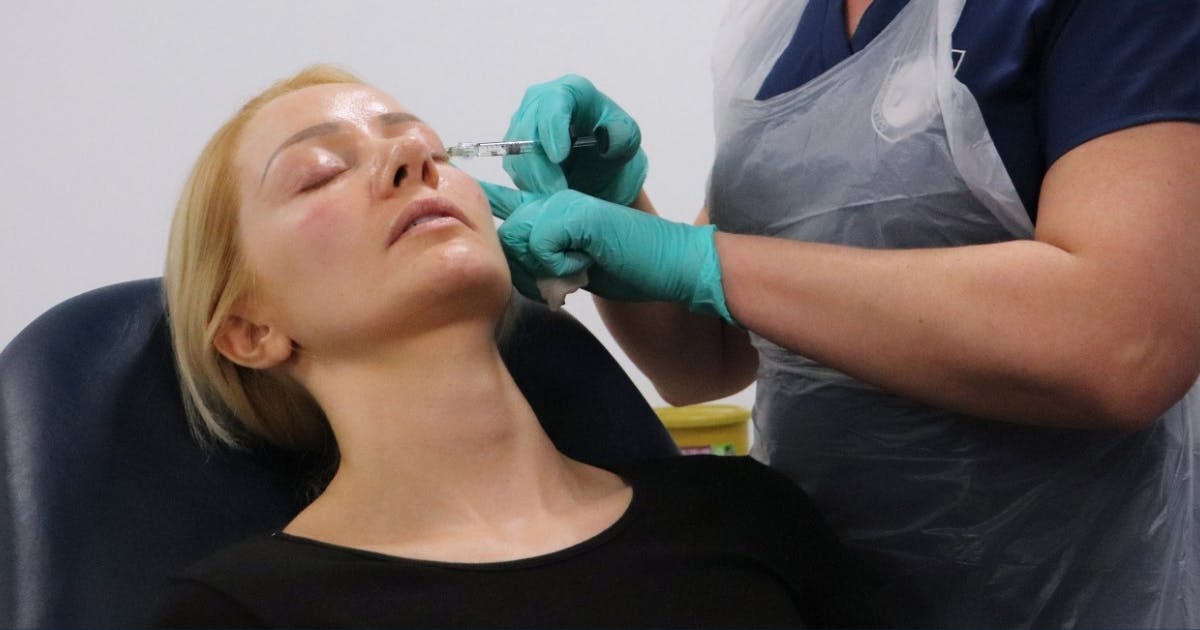What is the Gunshot Technique for Injecting Filler?

Learn all about the gunshot technique for precision injecting with Dr Lindsay.
Dr Lindsay Jones is a clinical trainer and aesthetics specialist. Her experience and aesthetics advice will help guide your injecting knowledge.
What is the gunshot technique?
Dr Lindsay explains that the ‘gunshot technique’ “refers to a filler injection technique using a needle.”
Created by Dr Arthur Swift, it’s also referred to as the ‘Swift point’.
Which area can the gunshot technique be used in?
The gunshot technique is typically used for temple treatment to fill the temporal fossa.

Gunshot technique patient selection
Temple filler is generally desired by patients experiencing signs of ageing. Dr Lindsay notes that “as we age, we lose temporal fat volume. This can result in a gaunt appearance and descent of the lateral brow tissue.
“A patient may notice this volume loss directly or how it affects their appearance, reporting looking tired or heavy around the eyes.”
Marking up for temple filler with the gunshot injecting technique
When marking up the temple filler, Dr Lindsay advises, “First mark the lateral orbital rim and the temporal fusion line.”
Follow this up with “the ‘one up, one over’ rule coined by Dr Arthur Swift to find the
exact entry point for the needle. This is 1 cm up the temporal fusion line and 1 cm lateral, in
parallel to the supraorbital rim,” she continues.
It’s also useful to palpate and locate the superficial temporal artery before deciding your entry point to avoid injuring it when treating. You may need to adjust your entry point slightly.
Injecting temple filler using the gunshot technique
When injecting using the gunshot technique, Dr Lindsay states that “the needle has to land on the bone. This is to deliver a supraperiosteal bolus of filler. It has to also avoid branches of the superficial temporal artery.
“Aspiration can be used, but shouldn’t be solely relied on to ascertain the presence of a blood vessel.
“Then, a slow bolus of a medium to high G prime filler product can be placed. In my practice, 0.3ml is the max I use for a single bolus.
“In total, I recommend no more than 0.5ml per temporal fossa. This is due to the tight adherence of the temporalis muscle to the bone at this superior portion.
“If more filler than 0.5ml per side is required, administer it in separate appointments. Allow a 4-week gap in between to let the product settle and explain this to your patient.”
Risk of vessel puncture
“Due to the risk of vessel puncture, many experienced practitioners are advocating large gauge blunt-tipped cannulas or USS (ultrasound scan) guidance for temple treatments. This is to avoid vascular adverse events,” Dr Lindsay offers.
She adds, “Filler can be placed in the deep or superficial fascial planes of the temporal fossa using retrograde linear threads. A soft product and massage may be needed to smooth out the product if the superficial plane is chosen.”
High-risk area for vascular events including filler blindness
Dr Lindsay highlights, “Whether using a needle or cannula in this region, it’s a high-risk area for vascular events. Therefore, the gunshot technique should only be attempted following rigorous training in facial anatomy and supervised injection practice.
“There are important blood vessels in the temporal fossa, with anastomoses with the internal circulation. This makes it a high-risk area for placing soft tissue filler. In particular, there are connections to the ophthalmic artery, which can result in central retinal blindness.”

Dr Lindsay’s injecting advice for aesthetics practitioners
We asked Dr Lindsay for her top two pieces of advice when tackling temple rejuvenation using the gunshot technique.
She tells us, “I would suggest that students master using needles and cannulas in other areas of the face before learning to treat the temples.
“In the meantime, if your patients require treatment, network with local, more experienced practitioners who can perform these techniques safely. The Comma app is a great resource for finding other practitioners.”
Her second point is worthwhile whether or not you offer temple filler. Building your peer network into a reliable support system is incredibly valuable in aesthetic medicine. It really comes into its own when you’re a solo aesthetics practitioner but is useful for all injectors.
Master injecting with JCCP-approved & Ofqual-regulated aesthetics training
As Dr Lindsay states above, new aesthetics practitioners must achieve proficiency in other foundational areas before approaching temple filler. We also advise having dedicated practical temple filler training before you start offering this to patients.
The best way to build your confidence to this point is through a thorough aesthetics training course.
Our Level 7 Diploma in Botox & Dermal Fillers does just that. Its carefully planned syllabus targets key learning areas such as:
- Facial anatomy
- Injecting techniques
- Needle and cannula use
- Ethics and law in aesthetic medicine
- Patient consultation and aftercare
- Skin ageing.
Why do I need a Level 7 Diploma?
Starting your medical aesthetics career requires a breadth of knowledge. Our Level 7 Diploma is designed to give you the best start to your aesthetics career. Not only is our injectables course Ofqual and JCCP-approved, but you’ll build a portfolio of clinical experience with us. You’ll treat your own patients in our clinic, so when you leave Harley Academy, you’re a safer and more competent injector.
Furthermore, as the aesthetics licensing scheme for England is underway, we offer a Level 7 Licensing Guarantee. We guarantee that doctors, dentists, nurses, clinical pharmacists and dental therapists on any of our Level 7 injectables courses will meet the educational elements covering botox and filler.
To find out more about this, what you’ll learn plus payment plans information, book your free 15-minute consultation.
All information correct at the time of publication
References:
Sykes, Jonathan M. MD; Cotofana, Sebastian MD, PhD;
Trevidic, Patrick MD; Solish, Nowell MD, FRCP; Carruthers, Jean MD, FRCSC,
FRC(OPHTH); Carruthers, Alastair MA, BM, BCh, FRCPC, FRCP(Lon); Moradi, Amir MD;
Swift, Arthur MD, CM, FRCS(C); Massry, Guy G. MD; Lambros, Val MD, FACS; Remington,
B. Kent MD, FRCP. Upper Face: Clinical Anatomy and Regional Approaches with Injectable
Fillers. Plastic and Reconstructive Surgery 136(5S):p 204S-218S, November 2015.
Download our full prospectus
Browse all our injectables, dermal fillers and cosmetic dermatology courses in one document
By submitting this form, you agree to receive marketing about our products, events, promotions and exclusive content. Consent is not a condition of purchase, and no purchase is necessary. Message frequency varies. View our Privacy Policy and Terms & Conditions
Attend our FREE open evening
If you're not sure which course is right for you, let us help
Join us online or in-person at our free open evening to learn more
Our Partners












STAY INFORMED
Sign up to receive industry news, careers advice, special offers and information on Harley Academy courses and services

